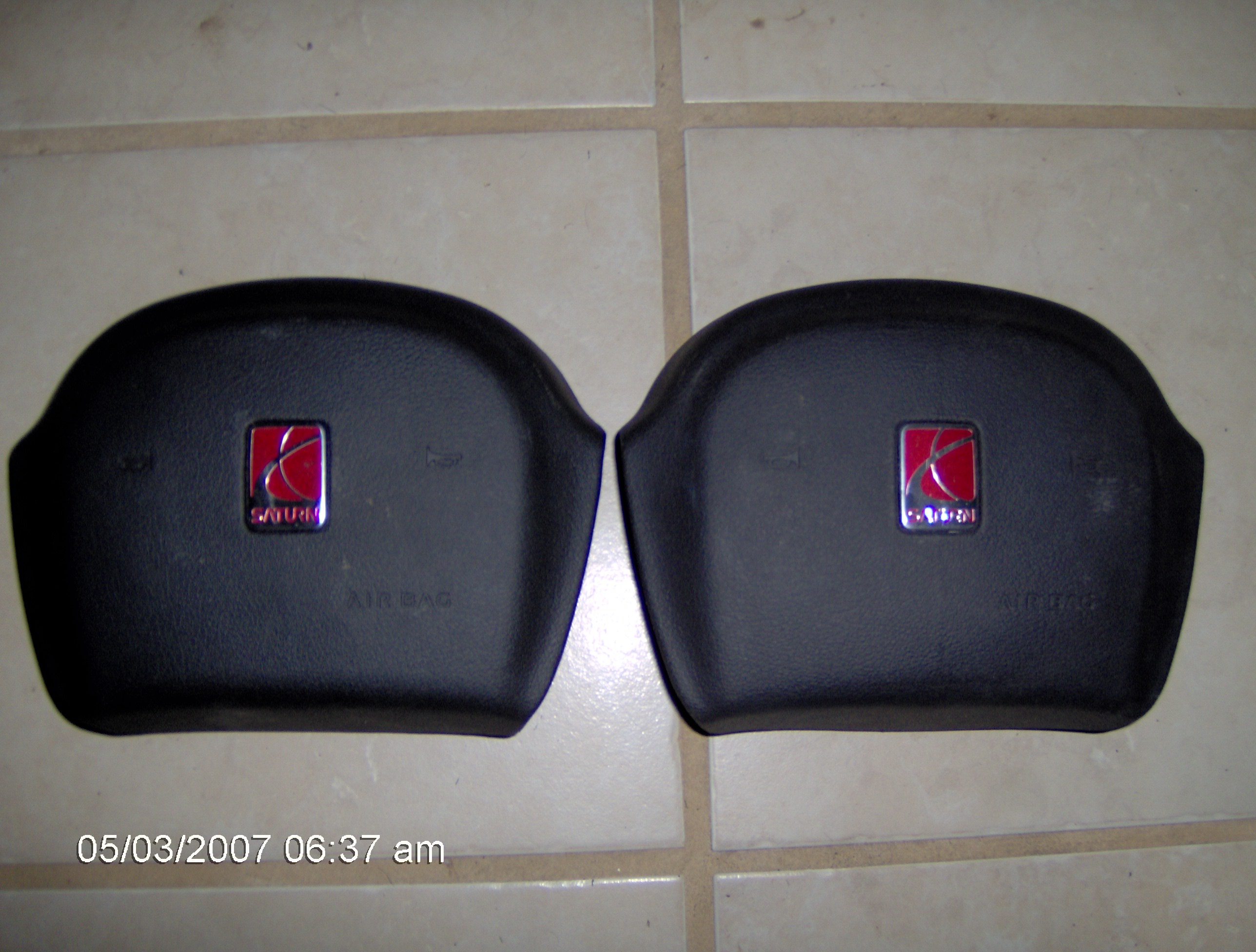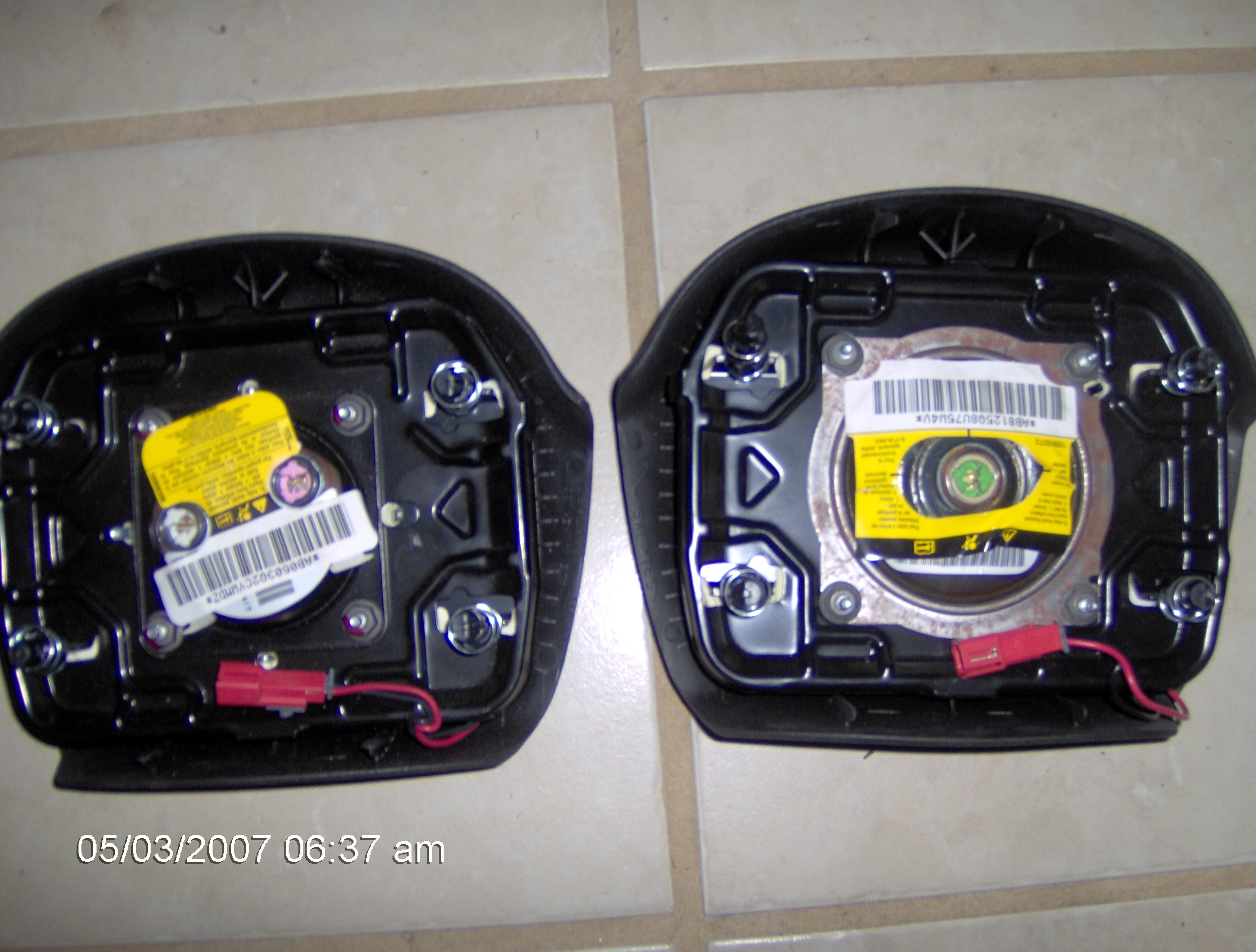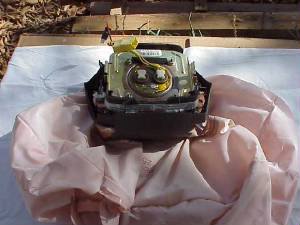|

As rescuers and EMS; we are going to see
some airbag deployment injuries. Most of these injuries are going to be minor chest and facial wounds, much like a carpet
burn. Though they are minor wounds, EMS personnel, with out fail should document and
report these wounds.
Warning! Any
direct contact with a deploying airbag can produce hidden brain and spinal damage, which the patient may not realize at the
time.
This report should include the
severity of the crash, whither minor or major, the angle of impact, whither the victim was wearing a seat belt or not, the
airbag that was contacted and the number and location of any other airbags that were deployed.
For the sake of EMS personnel’s understanding of the seriousness of
this repoet, let’s get a little technical.
In every crash there are actually three
impacts that accrue: The car crashes into a wall, the victim’s head crashes into the dash or steering wheel, and in
our case the victim’s brain crashes into their inter skull.
Now look at the laws of physics: If
the vehicle is moving 30 mph, the victim’s body is moving 30 mph. If the vehicle is suddenly stopped as in hitting a
wall, the victim is still moving forward at 30 mph. If he sustains a direct hit from the airbag that is traveling in the opposite
direction, deploying at 200 mph, his brain would actually crash into the front of his skull at 230 mph.
Now for every action there is an equal
and opposite reaction, meaning he would be snapped back, crashing against the seat at 230 mph, and his brain crashing into
the rear of his skull at 230 mph. (In reality the cushioning of the bag will absorb a small portion of that impact but we
would still have approximately 80% of it or some where around 184 mph).
Then look at the position of the airbag,
especially the driver’s with tilting steering column, depending on the position of the steering wheel as much as 60%
of the impact can be directly to the C-spine area.
With the development of side impact
airbags, EMS personnel must remember the proper terminology for these airbags.
For many years we reported the
steering wheel airbag as being the driver’s side airbag. Today this would lead doctors to look at a totally different
mechanizium of injury. The steering wheel airbag should be recorded as the driver’s frontal airbag and the same with
the passenger’s
Upon arrival, many times the vehicle
will be filled with what looks to be a cloud of smoke, causing many people to believe the vehicle is on fire. This cloud is
mainly made up of cornstarch or talcum powder used to keep the airbag from sticking together while folded in the module. It
is estimated that only about 2% of this cloud is actually smoke, which has escaped through the filters of the inflator.
Rescuers should immediately ventilate
the vehicle by opening the doors or windows. This powder is not harmful, but it can cause minor irritation to the eyes and
lungs, along with the fear of the vehicle being on fire, this could cause the patient to panic increasing the risk of shock.
Also in a major crash, the patient
could have chest damage, and with the irritation of the powder causing coughing, it could produce future damage.
Warning! Though
it is normal procedure, it is especially important that any patient experiencing an airbag deployment, whether properly or
hit by the bag, be fitted with a C collar and total spinal alignment maintained.
Old habits
are hard to break, though not a good idea and highly discouraged, traditionally EMS personnel will run to the patient before rescuers have time to stabilize the vehicle
and shut down the electrical system. With the new systems of today’s vehicles EMS
personnel must keep a few rules in mind when doing this.
Rule #1. When approaching the
patient, never lean through the window of the vehicle. Most of today’s vehicles are equipped with curtain airbags, these
airbags deploy straight down approximately 18 inches, or from the roof to the bottom of the window and are capable of snapping
a persons neck.
video -- See why this is so important
video -- Don't let this be you
Once the door
is open, if this curtain is deployed, rescues can safely cut the bag and get it out of their way. Unlike frontal airbags there
are no dual stage side impact airbags made.
Warning!
If the curtain airbag is not deployed; the rescuer must stay out of the 18 inch inflation zone until the time the rescuers
get the electrical system shut down and the capacitor drain time has expired.
Rule #2. If the door is able to
be opened, rescuers must be aware that a live door mounted airbag may be behind them while working on the patient. It is a
good idea to secure the door open with a rope or strap so it can not close against you. Never use a prop, as it is easily
kicked loose or becomes a tripping hazard.
The inflation zone for these airbags
is 5 inches from the door panel.
Rule #3. When opening the door
rescuers must also be aware of possible seat mounted airbags. These are mounted in the edge of the back rest portion of the
seat. Under normal deployment they follow the door panel, but with the door open they will extend out at a 45 degree angle,
about were a rescuer would be standing, or kneeling.
There are two types of these airbags.
The torso type will deploy outward
about 12 inches and upward about 12 inches, with the bag itself being about 5 inches thick.
The head/torso type will
extend outward about 12 to 14 inches and upward to about roof height and the bag itself is about 5 inches thick.
If possible, it is a good idea to do most of the patient
care from the back seat area. This keeps the rescuer out of both the frontal and side impact deployment zones. If for some
reason you must work from the door opening, it may be a good idea to tilt the back rest portion of the seat so that the B
post gives you some protection from the seat mounted airbag.
Warning! Remember
that if the seat mounted bag is not deployed there is likely a curtain airbag over your head, that is also not deployed.
Like the curtain airbag, both
the door mounted and seat mounted bags are side impact airbags and can only deploy once. If the bag is deployed it is safe
for the rescuer to work within its area or to cut it out of the way.
Warning! If
it is not deployed the rescuer must stay out of its inflation zone until the electrical system is shut down and the capacitor
drain time has expired.
video -- See why this is so important
Rule #4. For years we were taught,
that if a frontal airbag was deployed there was no more danger, this is no longer true.
Today’s driver’s and
passenger’s frontal airbags are all dual stage and are capable of deploying a second time.

Today, not only the later but,
all frontal airbags must be considered dual stage, because as can be seen here; when installed in the vehicle it is impossible
to tell which one is an earlier single stage and which one is a later dual stage.

The only possible way to tell them apart is to
look at the back which can not be done while mounted in the vehicle.

Always assume
a deployed frontal airbag has an active second stage, because even in looking at the back of a removed dual stage airbags,
it is impossible to visually determine if both stages have been activated.
Warning!
All personnel must stay out of the inflation zones; never put any part of your body or any type of equipment between a frontal
airbag and the patient, even if it has already deployed.
The inflation zone for a driver’s
frontal airbag is 10 inches from the center of the steering wheel.
The inflation zone for a passenger’s
frontal airbag is 20 inches from the front edge of the dash board.
Rule #5. Always cut the seat belt,
there are many reasons for this.
One being today’s vehicles
are equipped with pyrotechnic seat belt tensioners, if the tensioner is accidentally ignited, the belt will suddenly snap
the patient back against the seat, possibly furthering a spinal or chest injury.
Another reason is that to unbuckle
the seat belt the rescuer must lean over the patient putting him or her self within the inflation zone of the frontal airbags.
A third reason is: By unlatching
the belt we leave the metal buckle hanging loose. If the tensioner is ignited, the swinging metal buckle could cause injury
to you or the patient but, if the belt were cut, the loose strap would simply spin around the spool.
Also if a crash is sever enough
to deploy an airbag, always check the patient for seat belt injuries. These belts are pyrotechnic and deploy the same as the
airbags, the force of the belt retracting combined with the momentum of the patient being thrown forward can cause injury
to the chest and abdomen.
Rule #6. Never enter, lean on,
or lay any type of equipment on an empty passenger’s seat until the electrical system is shut down and the capacitor
drain time has expired.
These seats are equipped with
hidden weight sensors that control the deployment of the passenger’s frontal airbag. If the seat was empty at the time
of the crash, the airbag would not have deployed.
Warning! With
the electrical system still intact any weight placed on the passenger's seat would alert the control module to open the path
for a deployment. (See details in the passenger's airbag section, under weight sensors)
video -- See where you would be setting
Rule #7 If an accident is severe enough to warrant extrication type procedures,
total spinal alignment must be maintained on the occupant.
For many years, rescuers have used a quick extraction technique; in which they spun the patient a quarter turn, laid
them down and sled them up onto a long spine board.
Today’s vehicles are built a lot different. We no longer have the large door openings that earlier vehicles had.
In fighting the fuel and economic problems, manufacturers are building cars that are smaller on the outside but still keeping
them larger on the inside. By doing this the seats now sit partially behind the B post. Which means the patient must be maneuvered
around the post in order to place them on the spine board.
Today more than ever, we must revert back to the basics of extrication. “Move the metal and not the patient”.
Instructors do not always agree on some techniques. One of these is the moving of the seat. Most of the seats today
are electrically operated and many instructors teach that the seat needs to be moved back before the battery cables are disconnected.
Others teach that because the airbag deployment has already happened, the system is stable and by moving the seat, the seat
position sensor would cause the system to open the path for a second deployment. (See seat position sensors for details)
A good rule of thumb in this situation is: If the back rest is adjustable, tilt it back rather than move the seat.
If it is not adjustable and the patient is within the inflation zone, such as a single cab pick-up, be sure the seat is moved
to it farthest point, incase of an accidental deployment.
Another tip is that the back rest of a seat can be removed with a reciprocating
saw within seconds, giving the rescuer much more room to operate.
Helpful Tips
As we seen the passenger's seat is equipped with
weight sensors, As you study further you will find that the later model passenger's airbag will not deploy if this sensor
does not sense a certain amount of weight. This should be an immediate alert to EMS personnel, that if the airbag
is deployed and no one is in the seat, to check the scene for other victims.

Return to top of page
Return to --- Midsouth Rescue Technologies
|

